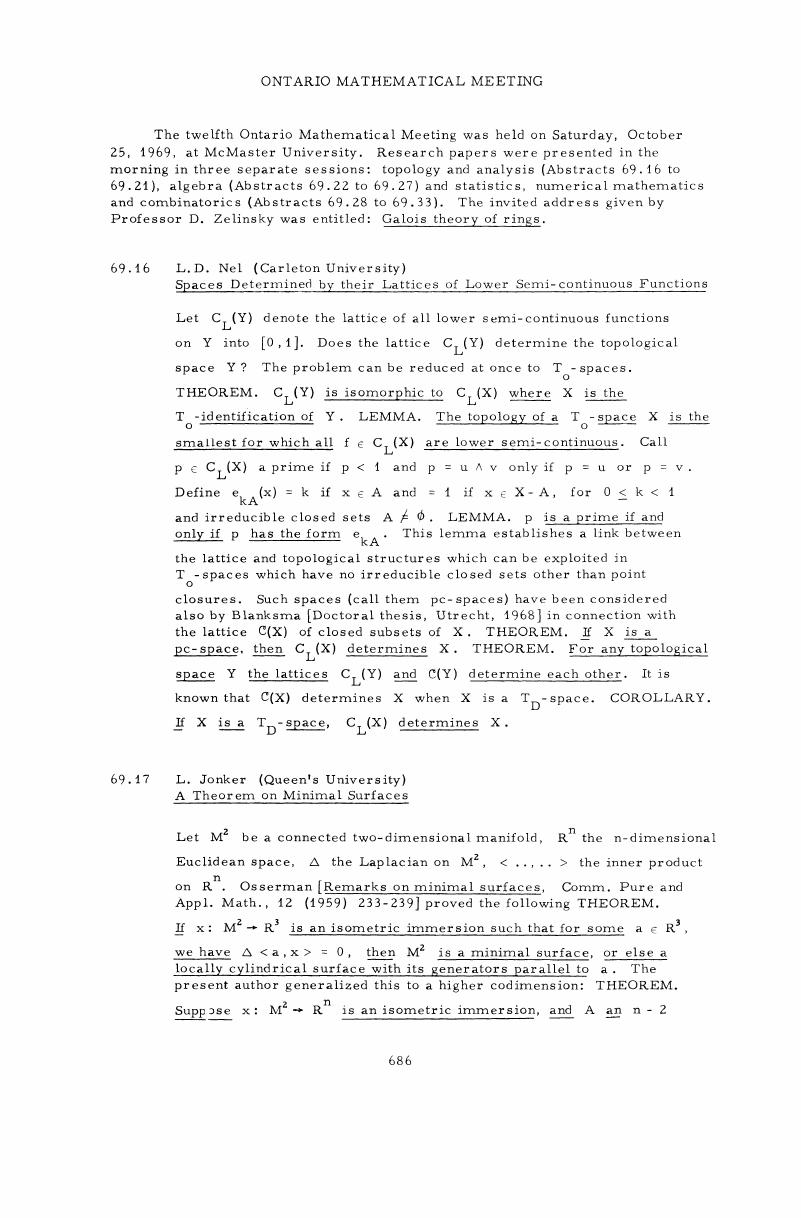No CrossRef data available.
Article contents
Ontario Mathematical Meeting
Published online by Cambridge University Press: 01 April 2019
Abstract
An abstract is not available for this content so a preview has been provided. As you have access to this content, a full PDF is available via the ‘Save PDF’ action button.

- Type
- Other
- Information
- Copyright
- Copyright © Canadian Mathematical Society 1969
References
2.
Rund, H., Invariant theory of variational problems for geometric objects. Tensor (N. S.)
18 (1967) 239–258.Google Scholar
3.
Lovelock, D., The uniqueness of the Einstein field equations in a four-dimensional space. Arch. Rational Mech. Anal. 33 (1969) 54–70.Google Scholar
4.
Lovelock, D., Divergence-free tensorial concomitants. Aequationes Mathematicae (to appear, 1970).Google Scholar
5.
Lovelock, D., Degenerate Lagrange densities for vector and tensor fields. Joint Math. Coll., Universities of South Africa and Witwatersrand. (1967) 237–269.Google Scholar
1.
Bass, H., Finistic dimension and a homological generalization of semi-primary rings. Trans. Amer. Math. Soc. 95 (1960) 466–488. Google Scholar
2. V. Dlab, Matrix representation of perfect rings. Google Scholar
3.
Eilenberg, S., Homological dimension and syzygies. Ann. of Math.
64 (1956) 328–336.Google Scholar
1.
Brualdi, R.A., Parter, S. V. and Schneider, H., The diagonal equivalence of a nonnegative matrix to a stochastic matrix. J. Math. Anal, and Appl. 16 (1966) 31–50.Google Scholar
2.
Marcus, M. and Mine, H., A survey of matrix theory and matrix inequalities. (Allyn and Bacon, Boston, 1964).Google Scholar
3.
Perfect, Hazel and Mir sky, L., The distribution of positive elements in doubly stochastic matrices. J. Lon. Math. Soc. 40 (1965) 689–698.Google Scholar
4.
Sinkhorn, R. and Nopp, P . V., Concerning nonnegative matrices and doubly stochastic matrices. Pacific J. Math. 21 (1967) 343–348.Google Scholar


